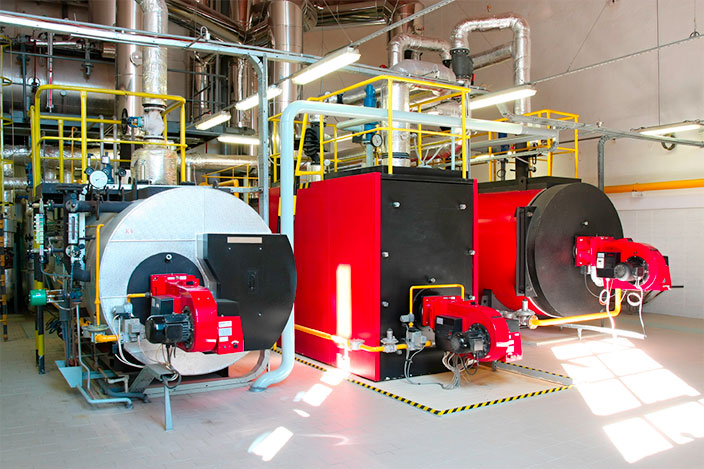Temporary Steam: A Versatile Solution for Various Industrial Needs
In the dynamic landscape of modern industries, flexibility and adaptability are crucial for maintaining competitive advantage and operational efficiency. One such versatile solution that has gained traction across various sectors is the use of temporary steam systems. These systems provide a flexible, on-demand steam supply that can address a multitude of needs, from maintenance shutdowns and emergency situations to seasonal demand fluctuations and process optimization. This article delves into the concept of temporary steam, its applications, benefits, and considerations for implementation.
Understanding Temporary Steam
Temporary steam systems are mobile, modular steam-generating units that can be quickly deployed to supplement or replace existing steam generation capabilities. These units are typically housed in trailers or containers, making them easy to transport and install at various sites. The equipment can range from small, skid-mounted boilers to large, high-capacity steam plants, depending on the specific requirements of the application.
Applications of Temporary Steam
Maintenance and Shutdowns: Industrial facilities often require planned maintenance or face unexpected shutdowns. Temporary steam can ensure that critical processes remain operational during these periods. For example, during the maintenance of a primary boiler, a temporary steam unit can take over the load, preventing production losses and maintaining continuity.
Emergency Situations: In the event of boiler failures or natural disasters, temporary steam units can be rapidly deployed to provide an immediate source of steam. This capability is crucial for industries where steam is integral to operations, such as food processing, chemical manufacturing, and healthcare.
Seasonal Demand Fluctuations: Some industries experience seasonal variations in steam demand. For instance, district heating systems may require additional steam during winter months. Temporary steam units can be brought in to meet this increased demand without the need for permanent infrastructure investments.
Process Optimization and Testing: Temporary steam can also be used for testing new processes or equipment. By providing a flexible steam source, companies can experiment with process changes or new technologies without disrupting their existing steam supply.
Construction and Commissioning: During the construction of new facilities, temporary steam units can provide necessary steam for testing and commissioning new equipment. This ensures that all systems are fully operational before the facility goes live.
Benefits of Temporary Steam
Flexibility and Scalability: Temporary steam solutions offer unmatched flexibility. They can be scaled up or down based on the specific requirements of the application. This adaptability is particularly beneficial for industries with variable steam demands.
Cost-Effectiveness: Investing in permanent steam generation infrastructure can be costly, especially if the need is temporary or seasonal. Temporary steam units provide a cost-effective alternative, as they can be rented for the duration of the need and returned when no longer required.
Quick Deployment: The modular and mobile nature of temporary steam units allows for rapid deployment. This is essential in emergency situations where downtime can lead to significant financial losses.
Reduced Downtime: By providing a reliable source of steam during maintenance or unexpected shutdowns, temporary steam units help minimize downtime and maintain production levels.
Environmental Benefits: Modern temporary steam units are designed to be energy-efficient and comply with stringent environmental regulations. This ensures that companies can meet their sustainability goals while addressing their steam needs.
Considerations for Implementation
While the benefits of temporary steam are clear, there are several factors to consider to ensure successful implementation:
Assessment of Needs: Conduct a thorough assessment of your steam requirements. This includes understanding the volume of steam needed, pressure and temperature specifications, and the duration for which the temporary steam will be required.
Selection of Equipment: Choose the right type and size of temporary steam unit. This will depend on the specific needs of your application and the available space for installation.
Logistics and Installation: Plan for the logistics of transporting and installing the temporary steam unit. This includes ensuring that the site is accessible for delivery and that there is adequate space for setup and operation.
Compliance and Safety: Ensure that the temporary steam unit complies with all relevant safety and environmental regulations. This includes proper venting, water treatment, and regular maintenance to prevent any operational hazards.
Integration with Existing Systems: Consider how the temporary steam unit will integrate with your existing systems. This may involve modifications to piping, electrical connections, and control systems to ensure seamless operation.
Conclusion
Temporary steam solutions provide a flexible, cost-effective, and reliable means of meeting diverse industrial steam needs. Whether for planned maintenance, emergency response, seasonal demand, or process optimization, these systems offer a practical alternative to permanent infrastructure investments. By carefully assessing their requirements and selecting the appropriate equipment, industries can leverage temporary steam to maintain operational efficiency, minimize downtime, and achieve their production goals. As technology advances and the demand for adaptable solutions grows, temporary steam is set to play an increasingly important role in the industrial landscape.



Comments
Post a Comment